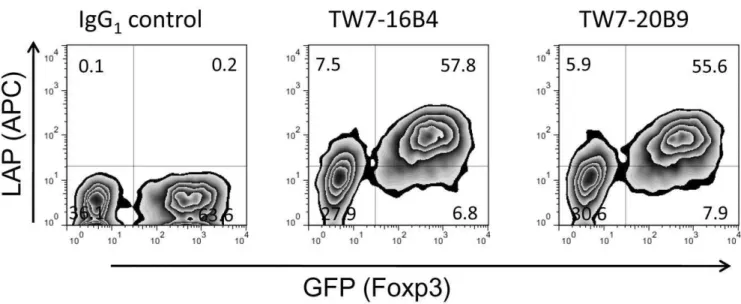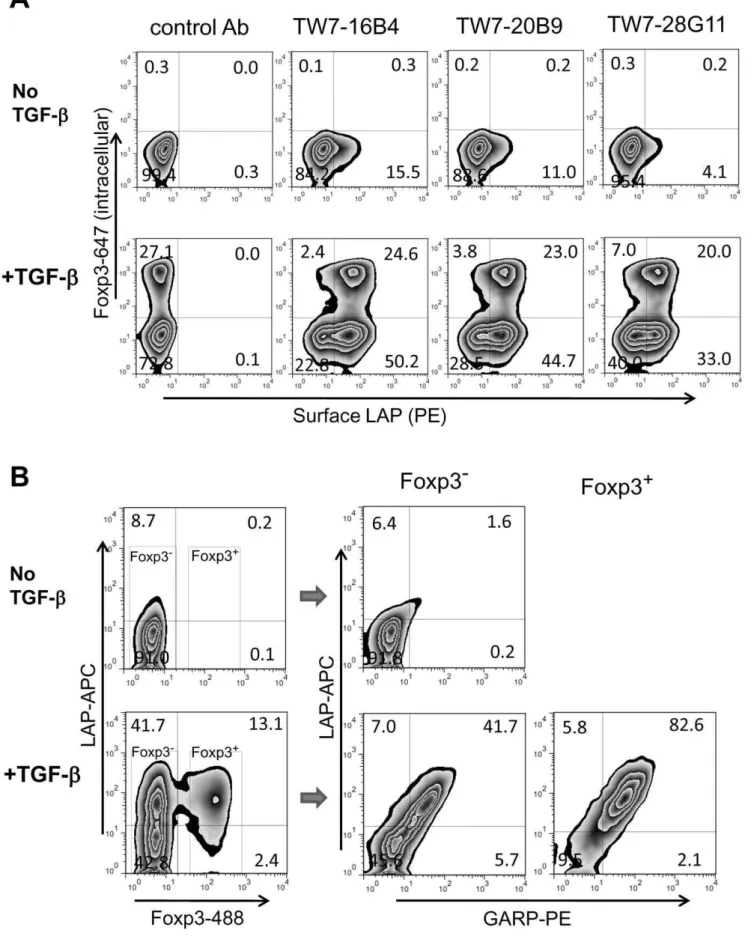TGF-β induces surface LAP expression on murine CD4 T cells independent of Foxp3 induction.
Texto
Imagem


Documentos relacionados
Objective: To investigate the peripheral Th17 cells and CD4 + CD25 + Foxp3 + regulatory T (Treg) cells and the expression of cytokines in the serum of AR patients.. Methods:
Increased prevalence of circulating novel IL-17 secreting Foxp3 expressing CD4+ + T cells and defective suppressive function of circulating Foxp3+ + regulatory cells support
Abstract: Expression of HLA-DR which is immu- ne response activation marker on T-cells and their sub- populations (CD4+ and CD8+ lymphocytes) and num- ber of CD4 + /CD25 + cells
In conclusion, our results demonstrated that both high CCR7 expression in tumor cells and increased intratumoral FOXP3 + Tregs were associated with worse OS in gastric
In conclusion, we demonstrated FoxP3 expression in differentiated thyroid carcinoma cells and found evidence that this expression may exert an important influence on
These results indicate that the increased secretion of latent TGF-β1 in GARP -transfected human and murine T cells results from shedding of GARP/TGF-β1 complexes from the
Treg cells are a T lymphocyte subset characterized by the expression of CD4 and CD25 as well as the transcription factor FoxP3 (forkhead box P3) and are indispensable for the
Furthermore, mesenchymal stem cells promoted strong inhibition of CD4+ and CD8+ T cell proliferation, increased the frequency of CD4+CD25+Foxp3 T cells, and changed the global